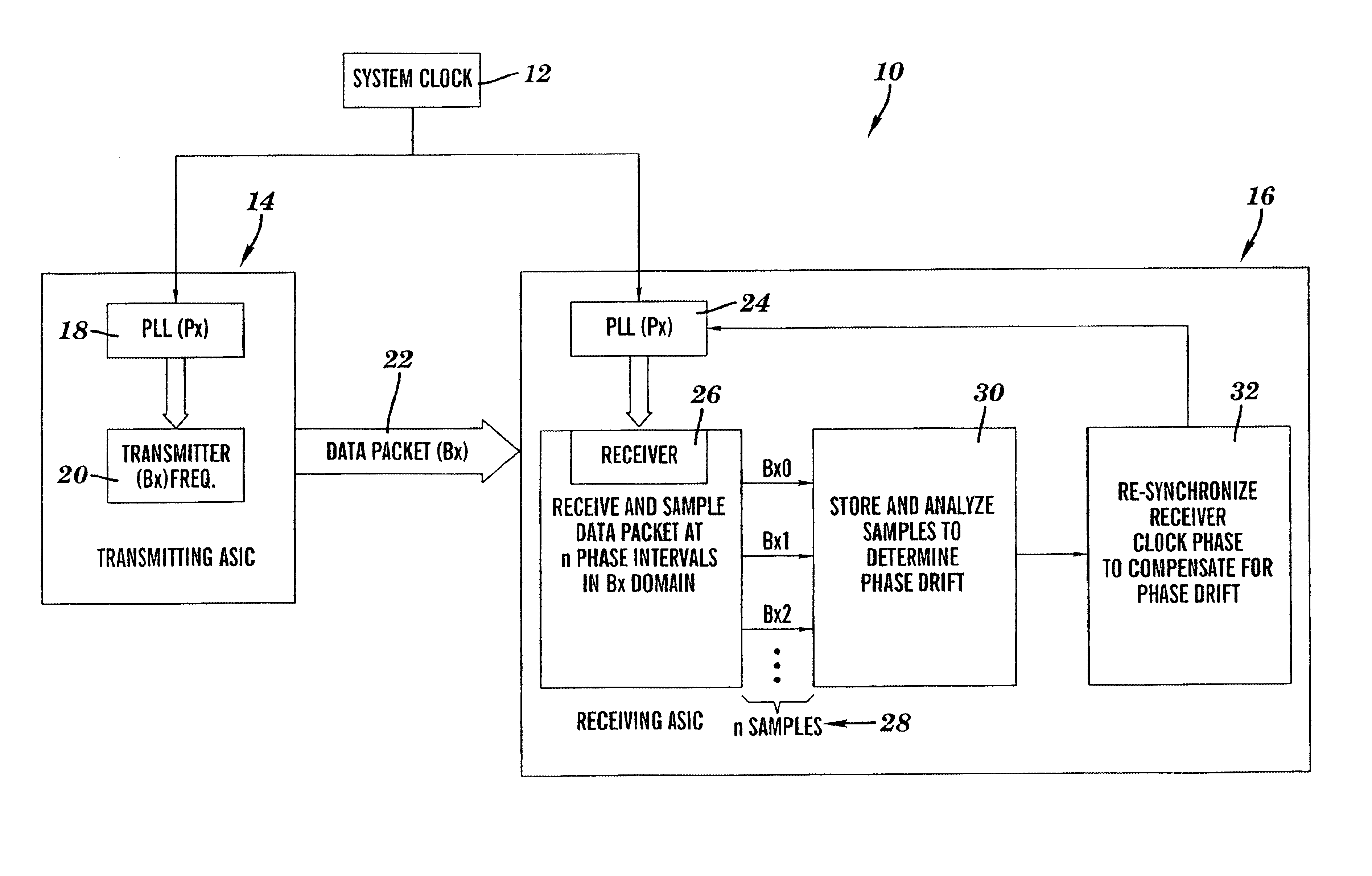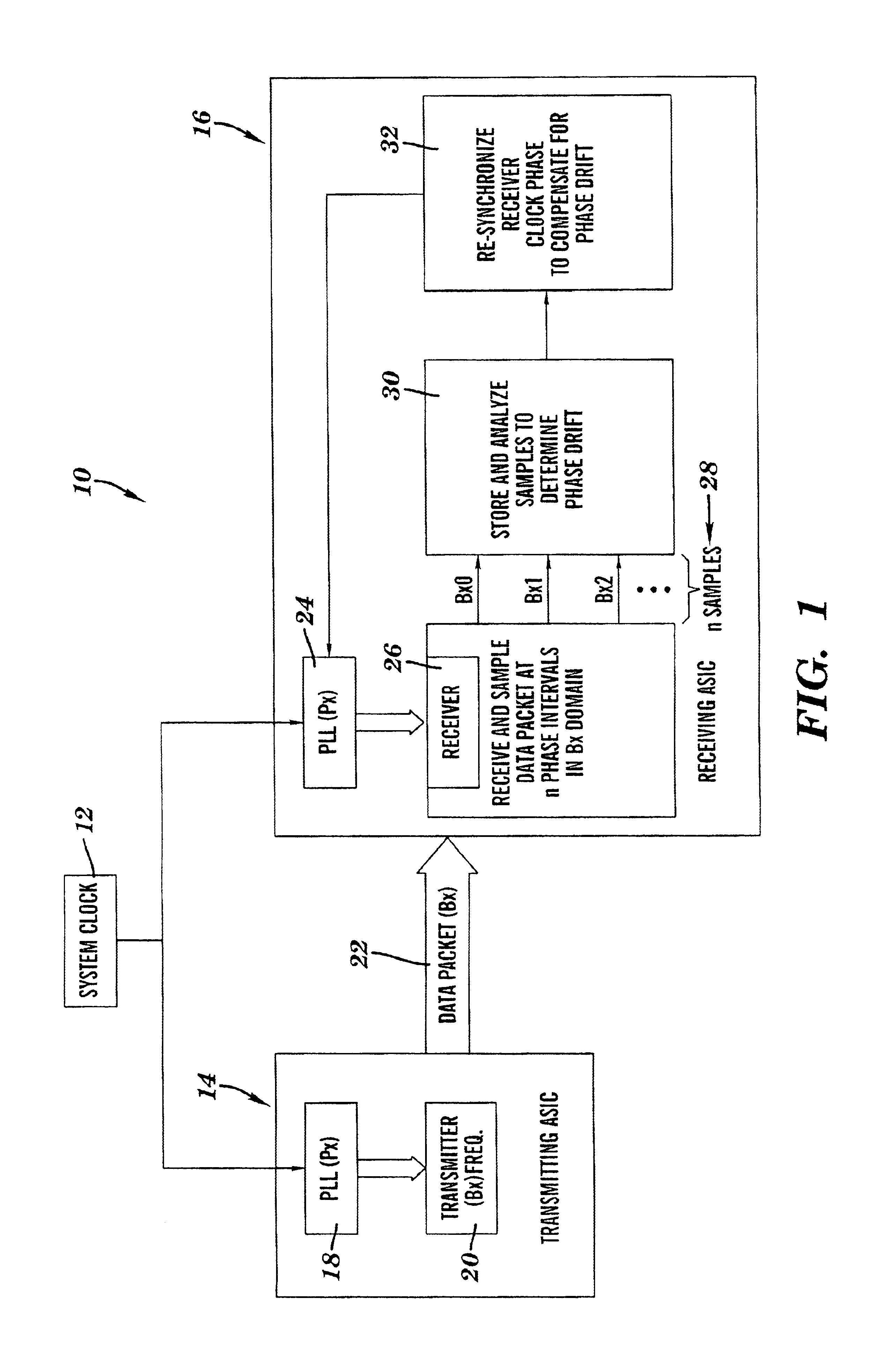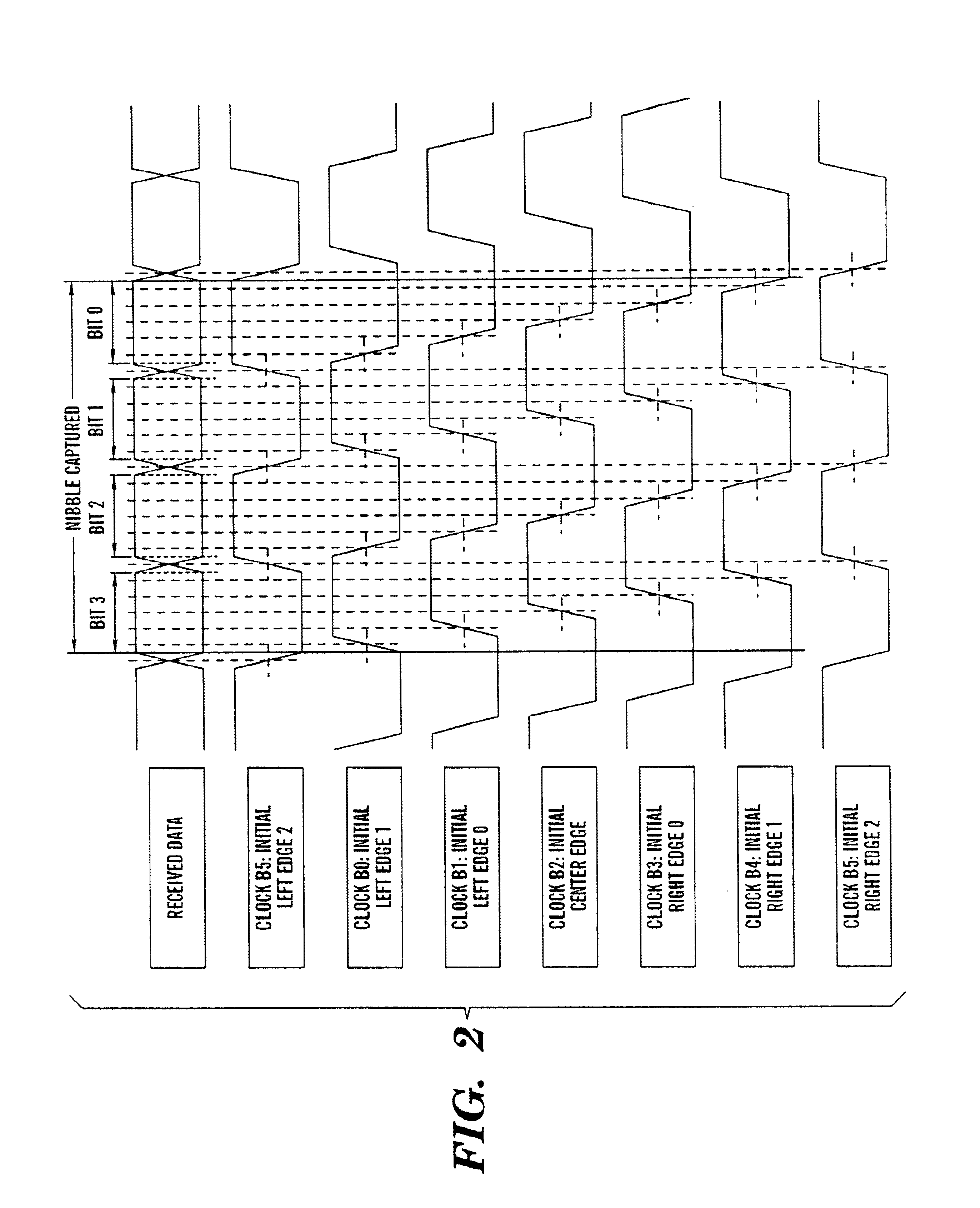High speed serial interface
a serial interface and high-speed technology, applied in the direction of synchronising signal speed/phase control, digital transmission, pulse technique, etc., can solve the problems of critical bottleneck in overall system performance, affecting the overall throughput of the system, and affecting the cost of increasing hardware requirements, so as to achieve accurate frequency and phase locking, high speed, and maximize throughput
- Summary
- Abstract
- Description
- Claims
- Application Information
AI Technical Summary
Benefits of technology
Problems solved by technology
Method used
Image
Examples
Embodiment Construction
I. Overview
[0035]This invention is intended to address the high speed ASIC to ASIC serial data transmission problem as discussed above. An objective objective in developing this architecture is to maximize the realizable bit rate per package I / O, while minimizing the number of PLLs required per ASIC. Other secondary objectives are to: (1) maintain a high degree of tolerance of receiver clock to data jitter, and data pulse width variations; (2) eliminate any inherent requirement to balance link to link transmitter to receiver phase delays in a multiple link implementation; (3) provide a means to compensate for transmitter to receiver phase delay drift over time; and (4) develop a design whose transmission rate is only bounded by the upper end at which the process technology can operate, having no other inherent process, voltage, temperature, or frequency limitations. There are many challenges to accomplishing the above goals. However, the basic problem in achieving the goal of highes...
PUM
 Login to View More
Login to View More Abstract
Description
Claims
Application Information
 Login to View More
Login to View More - R&D
- Intellectual Property
- Life Sciences
- Materials
- Tech Scout
- Unparalleled Data Quality
- Higher Quality Content
- 60% Fewer Hallucinations
Browse by: Latest US Patents, China's latest patents, Technical Efficacy Thesaurus, Application Domain, Technology Topic, Popular Technical Reports.
© 2025 PatSnap. All rights reserved.Legal|Privacy policy|Modern Slavery Act Transparency Statement|Sitemap|About US| Contact US: help@patsnap.com



